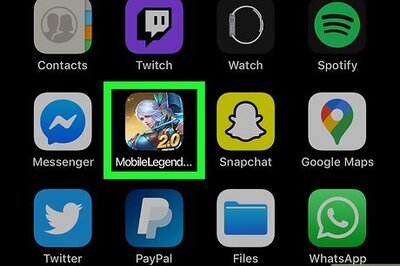
views
City-based Oxymed Hospital offers a unique treatment method called Ozone and Chelation therapy, a non surgical treatment for cardiovascular diseases and other diseases such as Parkinson’s disease, diabetic gangrene and foot ulcers, stroke and paralysis, erectile dysfunction, osteoarthritis, chronic fatigue syndrome and cancer among others.
This treatment at the Oxymed is helpful to those who are suffer from coronary artery disease, have had a heart attack and have been advised to undergo bypass heart surgery or balloon angioplasty. As a rule, different heart conditions are signaled by slightly different symptoms. A myocardial infraction or heart attack, occurs because part or all of the heart muscle sustains damage when the flow of oxygenated blood to the heart is cut off. Symptoms can include intense chest pain or prolonged, heavy pressure that radiates to the left shoulder and arm, the back, and even the teeth and jaw.
Men typically have a sensation of weight or pressure centered in the chest. Women often experience different types of symptoms, including burning sensations in the upper abdomen or midsternum difficulty breathing, sweating, nausea, vomiting, fainting, and light headedness may also occur along with the discomfort.
Angina pectoris, a symptoms of coronary Artery Disease (CAD), occurs when the heart muscle is temporary deprived of oxygen because the blood supply to the heart is insufficient for its current level of work. The primary sign of angina is chest pain during or after physical exertion or stress. In many instances, symptoms including dull aching, tingling, burning sensation, tightness, squeezing, heaviness, constriction, pressure, anxiety, or shortness of breath, are relieved when the exertion or stress eases up.
Vasopastic angina, a type of chest pain that occurs when blood flow to the heart is blocked by a spasm in the coronary artery, causes a consistent racing sensation in the chest, especially at night, that can disturb sleep.
After one describes their symptoms and the general state of health, the doctor will carry out an examination process. The examination will include checking to see if there is a blue tinge to the skin, especially around the finger nails and lips, which suggests a lack of oxygen; checking to see if the skin feels warm or cold to the touch; noting edema, or swelling, around the ankles, which could mean that not enough blood is reaching the area and checking for an even erratic pulse.
Cardiac auscultation - using a stethoscope to listen closely to the sounds the heart, makes as it contracts and relaxes - is one of the simplest and oldest diagnostic techniques. By listening to the heartbeat, the doctor will be able to evaluate its rate and rhythm.
Normally, the blood flows silently and smoothly through the vessels. Does the blood flow sound turbulent, which could indicate a murmur? Is there a whooshing noise, perhaps an indication that blood is leaking backward because the mitral valve between left atrium and left ventricle does not close sufficiently when the ventricle contracts? Does it sound uneven and spasmodic, which could be a sign that hardened plaque along the vessel walls has caused partial occlusion of the arteries?
Depending on what the doctor hears, other tests may be recommended. The majority of tests are noninvasive, that is, they can be performed without penetrating the body. In general, noninvasive tests such as ECHO, 3DCCG (Anglo Cartogram), TMT and Bio Chemistry, carry no risk and are pain-free. As a preventive measure, it is highly recommended to under take these tests before it is too late.
For Further details, contact Oxymed Hospitals Pvt Ltd, Nandanam. Call on 42131010 / 1014 / 1016. E Mail: [email protected], Website: oxymedhospitals.in




















Comments
0 comment